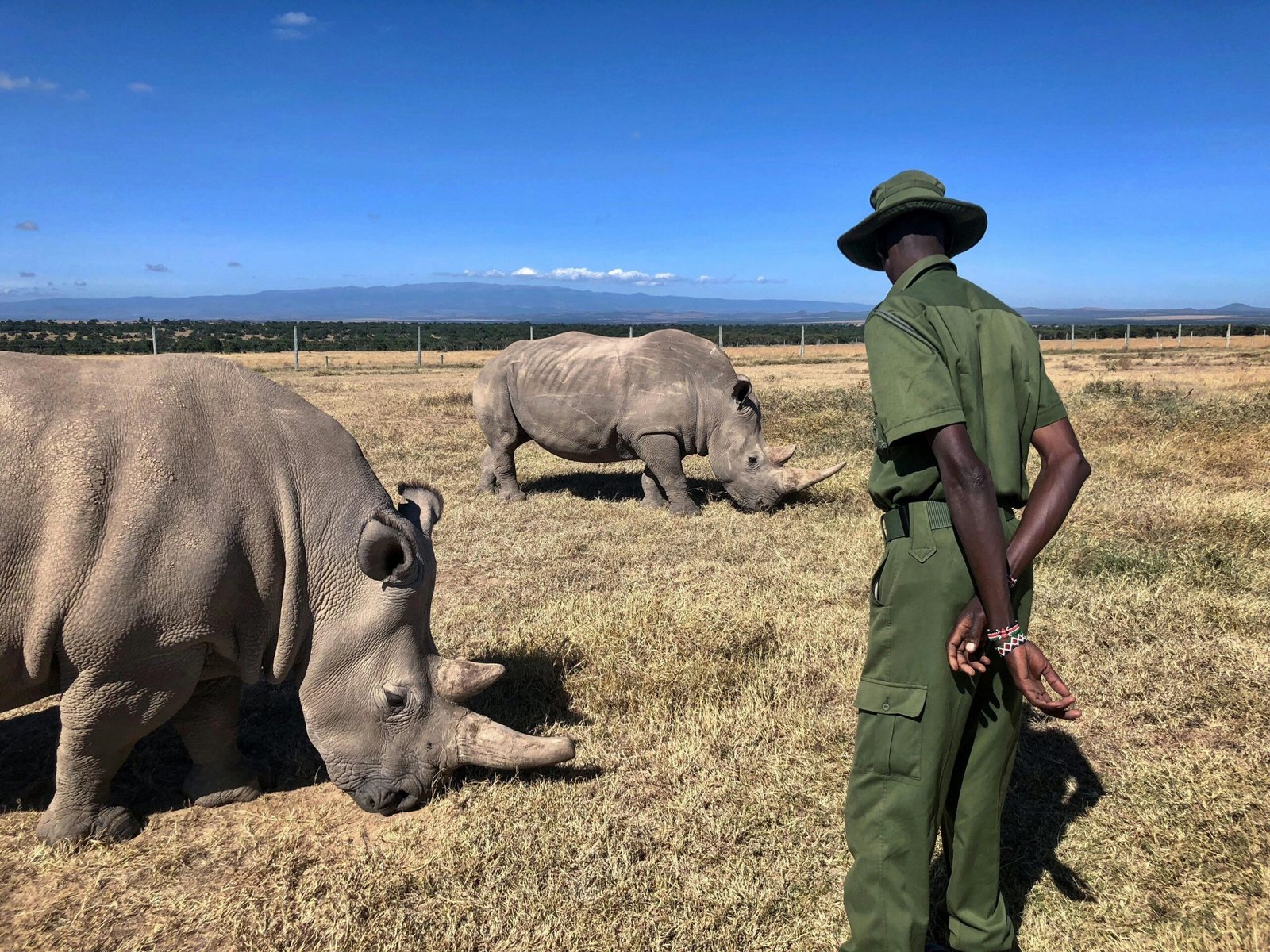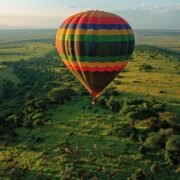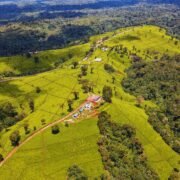
Rhino Tracking in Kenya: Top Places to Spot These Gentle Giants
Introduction to Rhino Conservation in Kenya
Rhino conservation in Kenya plays a critical role in the protection of these magnificent creatures, particularly the black and white rhinos, which are native to the region. Historically, rhino populations in Kenya have faced significant threats, primarily from poaching and habitat loss. In the early 20th century, both species were on the brink of extinction, prompting the Kenyan government and various conservation organizations to take urgent action aimed at preserving their populations.
In recent years, Kenya has made remarkable strides in rhino tracking and conservation, establishing some of the best rhino sanctuaries in Kenya, such as Ol Pejeta Conservancy and Lake Nakuru National Park. These areas not only serve as protected habitats for rhinos but also attract tourists seeking unique experiences, such as black rhino safaris in Kenya. The combination of conservation efforts and sustainable tourism plays a pivotal role in generating the funds necessary to support ongoing protection measures.
However, despite these positive developments, challenges remain. Poaching, driven by the illegal wildlife trade, still poses a grave threat to rhino populations, particularly for the black rhino, which is classified as critically endangered. In response, conservation projects have increasingly focused on anti-poaching strategies, community engagement, and wildlife education. Engaging local communities in rhino conservation experiences in Kenya is vital, as it fosters a sense of stewardship and creates alternative livelihoods that reduce reliance on poaching.
As part of the broader commitment to wildlife conservation, rhino safari tours in Kenya have become essential in conservation advocacy. These tours not only offer tourists the chance to observe these incredible animals in their natural habitat but also contribute funds to support rhino conservancy safaris in Laikipia and other critical initiatives. The synergy between conservation and tourism underscores the importance of protecting rhinos, ensuring that future generations can inherit the opportunity to admire these gentle giants in the wild.
The Different Species of Rhinos Found in Kenya
Kenya is home to two distinct species of rhinoceros: the Black Rhino and the White Rhino, both of which occupy crucial ecological niches in their respective habitats. Understanding the unique characteristics and behaviors of these species is vital for effective rhino tracking in Kenya, particularly for enthusiasts embarking on rhino safari tours in Kenya.
The Black Rhino, recognized for its smaller size and distinct hooked upper lip, primarily feeds on bushes and trees. These solitary creatures are generally more nocturnal and exhibit shy behavior, often making them a challenging yet rewarding encounter during black rhino safaris in Kenya. The Black Rhino is classified as critically endangered, with the primary threats stemming from poaching driven by the demand for rhino horns and habitat loss due to agricultural expansion.
In contrast, the White Rhino, named for its larger size and square-shaped mouth adapted for grazing, tends to be more social, often seen in groups. White Rhinos can typically be located in grassland and savannah regions, making places like Lake Nakuru ideal for rhino spotting. This species has a better conservation status compared to the Black Rhino, yet it still faces threats such as poaching and habitat encroachment.
Conservation efforts in Kenya have been pivotal in protecting both species. Organizations focusing on rhino conservation experiences in Kenya are actively working on anti-poaching initiatives and habitat restoration projects. Additionally, specific places such as the Ol Pejeta Conservancy and various rhino conservancy safaris in Laikipia have become exemplary models for sustainable rhino management. By participating in rhino tracking tours, visitors contribute to funding these vital conservation programs, thus playing a part in the plight of both the Black and White Rhinos in Kenya.
Best Locations for Rhino Tracking in Kenya
Kenya is home to some of the world’s most remarkable rhino populations, offering several premier locations for enthusiasts eager to embark on rhino tracking adventures. Among these, Nairobi National Park stands out as the only wildlife park situated within a capital city. This unique setting offers exceptional opportunities for seeing both black and white rhinos in their natural habitat. Guided tours are available, allowing visitors to experience close encounters with these magnificent creatures while supporting rhino conservation efforts.
Another noteworthy destination is the Ol Pejeta Conservancy, renowned for its commitment to wildlife protection. This sanctuary hosts both black and white rhinos, and visitors can engage in ol pejeta rhino tours that combine education with adventure. The conservancy also provides an opportunity to learn about ongoing rhino conservation experiences, making it a favorite among tourists and conservationists alike.
Lake Nakuru National Park is another prime location for rhino spotting, known for its breathtaking scenery and diverse wildlife. This park is particularly famous for its large population of white rhinos, which can often be observed grazing on the lush grasses covering the park’s landscape. Rhino safari tours in Kenya take advantage of the park’s beautiful surroundings, ensuring an unforgettable experience for wildlife lovers.
The Nairobi Animal Orphanage and the Kazuri Beads Women’s Factory, while not traditional tracking sites, offer unique insights into Kenya’s commitment to wildlife conservation and empowerment of local communities. Lastly, the rhino conservancy safaris in Laikipia present a unique opportunity to track rhinos in the wild while experiencing the stunning landscapes of the region. Each location offers distinct experiences and advantages, making them essential for any adventurous traveler seeking to witness these gentle giants in their natural environment.
What to Expect During a Rhino Tracking Safari
Embarking on a rhino tracking safari in Kenya promises a unique and exhilarating experience, offering visitors the chance to observe these magnificent creatures in their natural habitat. From the moment you arrive, anticipation builds as you prepare for a day filled with exploration and discovery. Typically, your day will begin early, as the morning hours are ideal for animal activity and visibility.
On a rhino tracking safari, expect to be guided by experienced wildlife professionals who are well-versed in the behavior and ecology of rhinos. These guides play a vital role in ensuring a successful tracking experience. Their expertise allows them to interpret signs such as footprints, dung, and feeding patterns, enhancing the chances of a successful sighting. They also have valuable knowledge of the various rhino species found in Kenya, including the critically endangered black rhino and the more populous white rhino.
Transportation during these safaris varies, often involving open-sided 4×4 vehicles that provide an unobstructed view of the surroundings while ensuring safety from the wildlife. Some tours may even incorporate trekking or walking safaris, which bring a different level of intimacy to the experience and a chance to spot not only rhinos but also other wildlife and rich flora along the way.
Throughout the journey, your guide will share insights about rhino behavior, their role in the ecosystem, and ongoing conservation efforts. Ethical tracking practices are at the forefront of rhino safari tours in Kenya, with guidelines in place to minimize disturbance to these animals. Safety measures are also strictly enforced, ensuring that both guests and wildlife remain protected. This thoughtful approach fosters a deeper understanding of the challenges rhinos face, offering a rewarding experience that goes beyond mere observation.
Best Times to Track Rhinos in Kenya
Tracking rhinos in Kenya presents a unique and exhilarating opportunity for wildlife enthusiasts and travelers alike. To maximize the chances of sightings and enhance the overall experience, understanding the best times to track these magnificent creatures is essential. Generally, the optimal periods for rhino tracking in Kenya depend on various factors, such as climate, migration patterns, and the animals’ daily activity levels.
The dry season, spanning from June to October, is often considered the best time to embark on rhino safaris in Kenya. During these months, vegetation is less dense, and the animals congregate around water sources, making them more visible and accessible for spotting. Particularly, Ol Pejeta Rhino Tours offer excellent opportunities during this time, allowing visitors to witness both black and white rhinos in their natural habitat.
The morning and late afternoon hours are especially favorable for rhino tracking, as these are the times when rhinos are most active. Animals typically move about and engage in feeding during the cooler parts of the day, thus increasing the likelihood of a successful encounter. Early risers have the advantage of witnessing captivating wildlife behaviors as the day unfolds, while late afternoon excursions can lead to stunning photographic opportunities with soft, golden light enhancing the scenery.
Another important aspect to consider is the local climate variations. Areas such as Lake Nakuru have distinct wet and dry seasons, influencing wildlife patterns. Rainy months, although less favorable for tracking due to mud and visibility issues, might still present unique rhino conservation experiences in Kenya, such as the nurturing behaviors of mothers with calves. Planning your rhino safari tours in Kenya with attention to these environmental aspects will significantly enhance your adventure and offer you a fulfilling experience.
Photography Tips for Capturing Rhinos in Their Habitat
Capturing stunning images of rhinos in their natural environment requires careful planning and an understanding of both the animals and the art of wildlife photography. Whether you are participating in black rhino safaris in Kenya or enjoying the unique experience of Ol Pejeta rhino tours, having the right gear is essential for quality photography. A good telephoto lens, ideally ranging from 200mm to 400mm, will allow you to capture detailed images without disturbing the animals. Additionally, consider using a camera with a fast autofocus system to ensure you can track and focus on these magnificent creatures as they move.
When it comes to camera settings, utilizing a fast shutter speed (at least 1/500 sec) is crucial for freezing motion, especially if the rhinos are active. A wider aperture, such as f/4 or f/5.6, can create beautiful depth of field, helping your subjects stand out from the background. It’s also advisable to shoot in burst mode, enabling you to capture multiple frames in quick succession, which is invaluable in dynamic settings like lake Nakuru rhino spotting.
Finding the perfect angle is another key aspect of wildlife photography. Position yourself at the animal’s eye level to create more engaging and intimate images. Patience is vital; wait for the right moment when the rhinos display natural behaviors. Keep safety in mind by maintaining a respectful distance and being aware of your surroundings to ensure the comfort of the rhinos. Many of the best rhino sanctuaries in Kenya, such as those known for rhino conservation experiences, provide guided tours where experts can assist in maximizing your photographic opportunities while prioritizing safety for both the animals and photographers.
Ultimately, capturing the grace and beauty of rhinos in their habitat can be a rewarding experience. By using the right gear, perfecting your settings, and respecting the wildlife, you contribute to a deeper appreciation for these gentle giants during your rhino safari tours in Kenya.
Supporting Rhino Conservation Efforts
As interest in rhino tracking Kenya grows, so too does the opportunity for tourists and wildlife enthusiasts to support vital conservation efforts aimed at protecting these magnificent creatures. One of the most significant ways visitors can contribute is by supporting local conservation organizations dedicated to rhino protection. Many of these organizations work tirelessly to combat poaching and habitat loss, ensuring the survival of rhinos in their natural habitats.
Responsible tourism plays a crucial role in sustainable conservation practices. When planning rhino safaris in Kenya, it is important to choose reputable tour operators that prioritize ethical wildlife viewing and support local conservation initiatives. These operators often safeguard the environments in which rhinos thrive and contribute a portion of their profits to conservation efforts. By selecting such tours, visitors help to ensure that the area’s ecosystems remain healthy and that local communities benefit from wildlife tourism.
In addition to choosing responsible tour operators, tourists can explore various options for direct contributions. This includes donations to local wildlife organizations that focus on rhino conservation experiences in Kenya. Such donations can directly assist in anti-poaching operations, habitat restoration, and community education programs. Volunteering opportunities are also available, allowing individuals to immerse themselves in conservation projects, engage with local communities, and support hands-on efforts to protect rhino populations.
Another unique way to make a difference is by participating in rhino adoption programs offered by several conservation groups. These programs typically allow individuals to “adopt” a specific rhino and contribute financially to its wellbeing and that of its habitat. This ongoing support can have a substantial impact, as it helps fund essential resources for monitoring and protecting these animals.
Overall, by engaging in responsible tourism and supporting conservation organizations, visitors to Kenya can play a vital role in ensuring that rhinos not only survive but thrive in their natural environments. Enjoying activities such as Ol Pejeta rhino tours, Lake Nakuru rhino spotting, or rhino conservancy safaris in Laikipia can become meaningful experiences that benefit both tourists and the rhino population alike.
Personal Stories from Rhino Trackers
Experiences from those who have embarked on rhino tracking in Kenya offer valuable insights into the profound connection between humans and wildlife. One memorable account comes from a visitor who participated in an Ol Pejeta rhino tour, where the chance to observe black rhinos roaming freely in their natural habitat evoked a sense of awe and responsibility. The tracker shared how witnessing these magnificent creatures up close not only provided a thrilling adventure but also deepened their understanding of rhino conservation efforts in Kenya.
Another enthusiastic traveler recounted their experience with lake Nakuru rhino spotting, describing how the vibrant landscape, painted with the backdrop of the picturesque lake, created an unforgettable setting for wildlife observation. This individual expressed that spotting a white rhino during a sunrise tour filled them with a mix of excitement and reverence, transforming their view of wildlife from mere observation to an active commitment to conservation. They felt compelled to advocate for rhino protection efforts and shared their stories to raise awareness among their peers.
The emotional impact of these encounters extends beyond the animals themselves. A participant in a rhino conservancy safari in Laikipia detailed the camaraderie that developed among fellow trackers during their journey. This bond was strengthened by shared moments of anticipation while spotting rhinos and the discussions about the challenges faced in protecting these gentle giants. Such personal experiences underscore the importance of rhino conservation experiences in Kenya, highlighting how individuals can not only partake in thrilling adventures but also contribute to lasting change.
These accounts illustrate that rhino tracking in Kenya is not merely an exploratory excursion; it is a transformative journey that fosters a deeper appreciation for wildlife and the urgent need for conservation. Engaging in rhino safari tours in Kenya can inspire visitors to become advocates for these incredible animals and promote sustainable practices that benefit both wildlife and local communities.
Conclusion: The Future of Rhinos in Kenya
As we reflect on the various aspects of rhino tracking in Kenya, it is crucial to underscore the significance of ongoing conservation efforts to safeguard these magnificent creatures. The insights shared throughout this blog post have highlighted the remarkable diversity of environments in which rhinos can be spotted, including the best rhino sanctuaries in Kenya. From the Ol Pejeta Conservancy to Lake Nakuru, each location offers unique rhino conservation experiences that play a vital role in the survival of both black and white rhinos in the region.
Tourism emerges as an essential element in rhino conservation initiatives. Activities such as rhino safari tours in Kenya not only provide visitors with an opportunity to witness these gentle giants in their natural habitats but also generate essential revenue that supports conservation projects. The funds derived from rhino tracking Kenya activities directly contribute to anti-poaching efforts, habitat restoration, and community education programs. By participating in black rhino safaris in Kenya or Ol Pejeta rhino tours, tourists actively contribute to the protection of these species, ensuring their presence for generations to come.
Moreover, it is imperative that we foster a collective sense of responsibility towards rhino conservation. Engaging local communities in conservation efforts is crucial, as their involvement can lead to more sustainable practices and ensure the long-term success of rhino habitats. Rhino conservancy safaris in Laikipia exemplify how collaboration between conservationists and local populations can yield positive outcomes for wildlife preservation. As stewards of the Earth, we must commit to protecting rhinos and their ecosystems.
In conclusion, the future of these majestic animals greatly depends on our continued dedication to their protection. By raising awareness and promoting ecotourism, we can drive positive change and create a brighter future for rhinos in Kenya.






